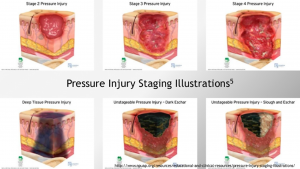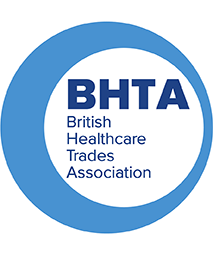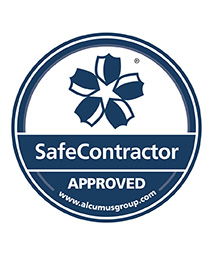Did you know that there are side rail regulations put in place by the government and checked by the Care Quality Commission (CQC) in order to prevent entrapment? These rail regulations have to be adhered to by all care providers, which can be difficult, especially in homes with a range of bed and mattress types.
What do the Regulations Say?
Side Rail Regulations 60601/2/52 state that the height of the top edge of the side rail must be more than 220mm above the non- compressed mattress.
This means that when a mattress is placed on the bed platform the top of the mattress must be at least 220mm from the top of the side rails, as illustrated in the image below:
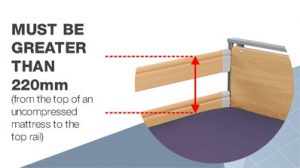
The regulations also state that the gap between side rails must be smaller than 120mm. Shown in the image below:
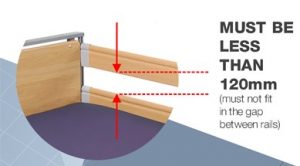
How is Compliance Tested?
The distance between the top of the mattress and the top of the side rail is measured by care providers – see below our handy tool to help – and the gap between the side rails is tested by manufacturers using a Cone Tool.
The Cone Tool is 120mm in diameter at its widest and 60mm at its smallest. The 60mm end of this tool is placed between the side rails at the weakest point and 250N of force is applied. If the 120mm part of the cone does not pass through the side rails, then they pass the compliance test. The Cone Test is shown below.
How Can Harvest Healthcare Help?
- All Harvest Healthcare’s standard beds are side rail compliant.
- All Harvest Healthcare’s mattresses can be placed on any Harvest Healthcare Woburn bed and be compliant.
- We offer easy to assemble rail sections.
- Part of our servicing package includes Bed Inspections where side rails are checked for compliance.
- We offer simple to use bed rail height measurement tools, shown below, so that you can quickly and easily check if you are compliant. If you would like to be sent copies of these testers, please get in touch.
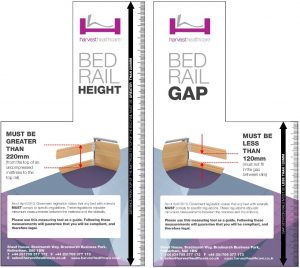
Our aim is to solve your problems to ensure that you can offer excellent care and remain complaint all at a reduced cost.
If you would like more information on how we can help you then please contact us.
For updates on Harvest healthcare please visit our Twitter Page Here
Or follow us on LinkedIn Here
